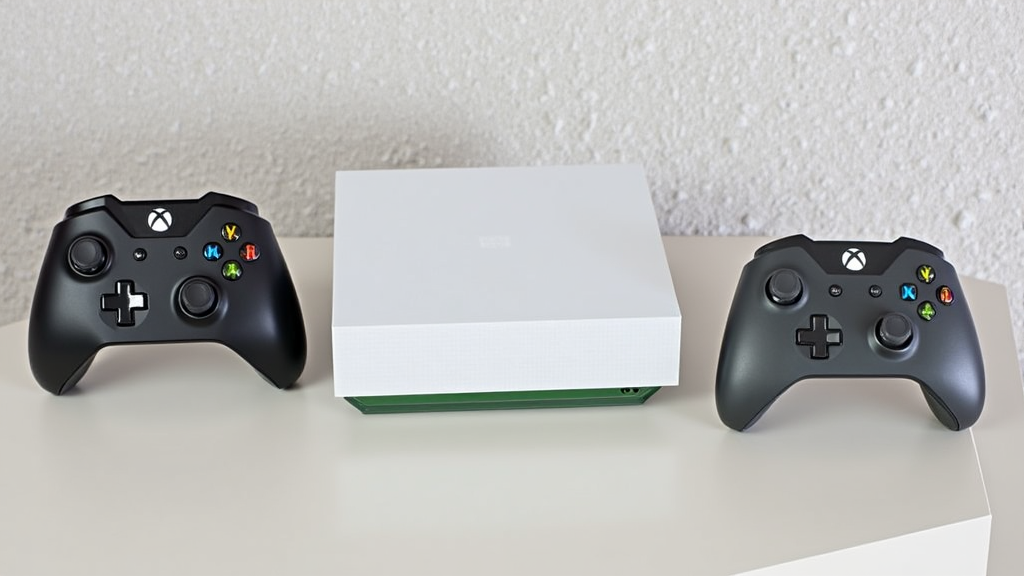Xbox Series S: Essential 2025 Guide to Specs, Value, and Upgrades
Estimated reading time: 15 minutes
Key Takeaways
- The Xbox Series S remains a cost-effective, next-gen console solution in 2025, ideal for casual gamers, families, and businesses
- It delivers solid 1440p gaming, deep Game Pass integration, and low noise in a highly compact form factor
- Storage constraints make SSD expansion and effective library management crucial
- Game Pass and digital ownership drive the console’s value proposition, while backward compatibility ensures broad game access
- Best suited for mainstream, business, and secondary use—not the top pick for graphics enthusiasts or demanding competitive gaming
Table of Contents
- Introduction: Xbox Series S in 2025
- What Is the Xbox Series S?
- Series S vs Series X
- Real-World Performance Differences
- Handling Modern 2025 Games
- Storage Realities & Solutions
- Expansion & Upgrade Paths
- Game Pass & Digital Value
- Digital-Only Ownership
- Setup & Optimization
- Backward Compatibility
- Exclusives & Online Play
- Is Series S Worth It?
- Future-Proofing
- Buying & Accessories
- FAQ
Introduction: Xbox Series S in 2025
The Xbox Series S represents Microsoft’s strategic approach to making next-generation gaming accessible to mainstream consumers and cost-conscious businesses in 2025. This all-digital console continues to demonstrate remarkable staying power in the competitive gaming market, generating over 21.3 million units in global sales since its November 2020 launch.
Microsoft’s vision centers on affordability without sacrificing core next-generation capabilities, positioning the Series S as an entry point into the Xbox ecosystem. The console seamlessly integrates with Xbox Game Pass, Microsoft’s subscription service that transforms how businesses and individuals approach entertainment technology investments.
For small and medium enterprises looking to enhance employee break areas or provide cost-effective entertainment solutions, the Series S offers compelling value propositions. The console’s compact design, reduced power consumption, and digital-first approach align with modern business efficiency standards. Recent 2025 firmware updates have improved performance optimization for popular titles while maintaining the console’s budget-friendly positioning.
The gaming landscape has evolved significantly, with cloud gaming and digital distribution becoming primary factors in technology adoption decisions. Understanding the Series S’s capabilities helps business leaders, managers, and individuals make informed choices about entertainment technology investments that deliver measurable returns on engagement and satisfaction.

What Is The Xbox Series S?
The Xbox Series S is Microsoft’s compact, all-digital next-generation gaming console designed for budget-conscious consumers and businesses seeking affordable entertainment solutions. Released in November 2020 alongside the more powerful Series X, this console targets casual gamers, families, digital content adopters, and cost-effective business entertainment needs.
Microsoft engineered the Series S with specific design priorities that distinguish it from premium gaming hardware. The console eliminates optical disc drives entirely, embracing digital distribution as the exclusive content delivery method. This approach reduces manufacturing costs while enabling a significantly smaller physical footprint compared to traditional consoles.
Key specifications include:
- Storage: 512GB custom NVMe SSD with approximately 364GB usable space
- Graphics Processing: Custom AMD RDNA 2 GPU delivering ~4 TFLOPS of computational power
- Target Resolution: 1440p gaming with intelligent upscaling to 4K displays
- Design: 60% smaller than Series X with simplified aesthetic suitable for office environments
- Price Point: $299.99 MSRP, often available for $249.99 during promotional periods
- Game Pass Integration: Optimized for Microsoft’s subscription gaming service (Cloud gaming is also explored here)
The Series S appeals particularly to SMEs requiring cost-effective entertainment solutions for employee spaces, traveling professionals needing portable gaming options, and budget-conscious households prioritizing value over maximum performance. Its quiet operation and minimal space requirements make it suitable for professional environments where noise considerations matter.
For business decision-makers evaluating entertainment technology investments, the Series S offers predictable costs through digital game purchasing and subscription services, eliminating ongoing physical media management requirements.

Xbox Series S vs Xbox Series X: Side-by-Side Comparison
The fundamental differences between Series S and Series X center on performance capabilities, storage capacity, and physical media support, creating distinct value propositions for different user segments.
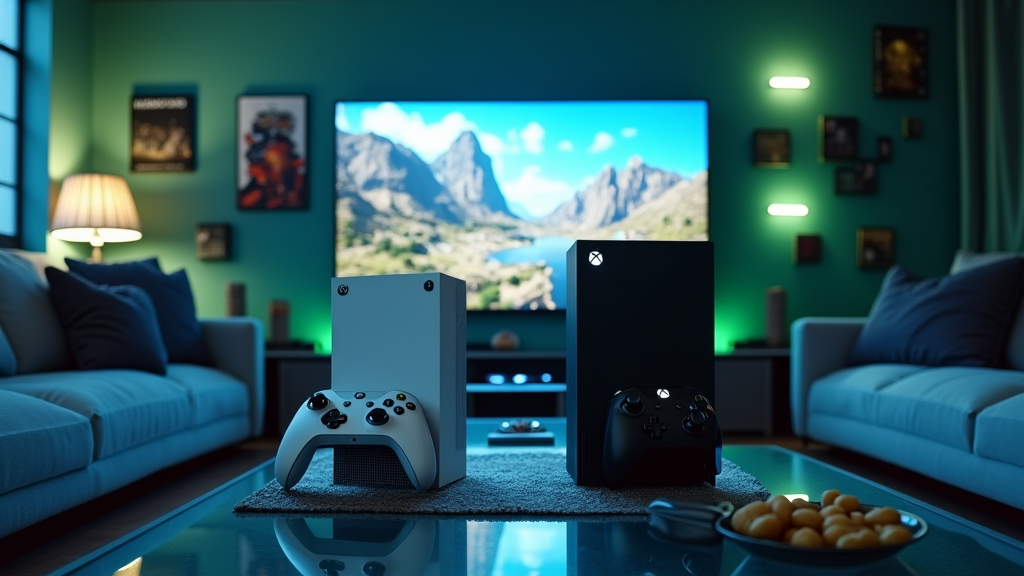
Technical Specs and Feature Table
- The comparison table below details specifications:
| Specification | Xbox Series S | Xbox Series X |
|---|---|---|
| CPU | Custom AMD Zen 2 8-core 3.6GHz (3.4GHz SMT) | Custom AMD Zen 2 8-core 3.8GHz (3.6GHz SMT) |
| GPU | Custom AMD RDNA 2 4 TFLOPS | Custom AMD RDNA 2 12.15 TFLOPS |
| Memory | 10GB GDDR6 (8GB @ 224GB/s, 2GB @ 56GB/s) | 16GB GDDR6 @ 320GB/s |
| Storage | 512GB Custom NVMe SSD | 1TB Custom NVMe SSD |
| Target Resolution | 1440p (upscaled 4K) | Native 4K |
| Physical Media | Digital Only (No Disc Drive) | 4K UHD Blu-ray Drive |
| Dimensions | 6.5″ x 5.9″ x 2.6″ (151mm x 275mm x 64mm) | 5.9″ x 11.8″ x 5.9″ (151mm x 301mm x 151mm) |
| Weight | 4.25 lbs (1.93 kg) | 9.8 lbs (4.45 kg) |
| Price (2025) | $299.99 (often $249.99) | $499.99 |
- Digital-Only Nature: Series S eliminates backwards compatibility with physical Xbox, Xbox 360, and Xbox One disc games
- Performance Trade-offs: Series S targets 1440p resolution with dynamic scaling, while Series X delivers consistent 4K performance
- Storage Limitations: Series S’s 512GB capacity accommodates approximately 8-12 modern games simultaneously
- Form Factor Advantages: Series S’s compact design suits space-constrained environments and portable setups
The Series S targets users prioritizing affordability and digital convenience, while the Series X serves enthusiasts demanding maximum performance and comprehensive backwards compatibility.
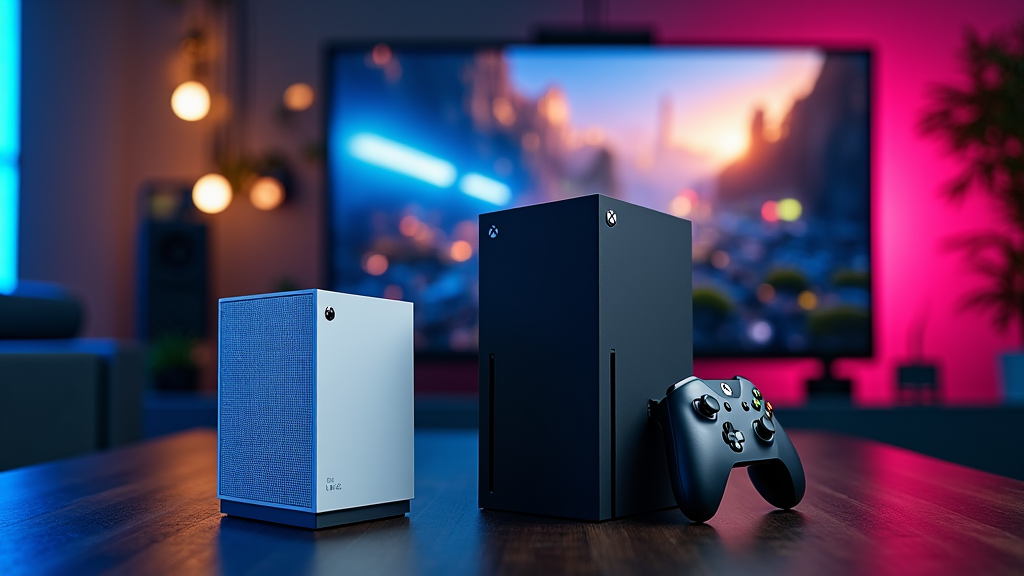
Real-World Performance Differences
In practical gaming scenarios, the Series S delivers solid 1440p performance with occasional compromises in visual fidelity and loading times compared to the Series X. Most games run at 60fps on Series S, though demanding titles may drop to 30fps or reduce graphical settings to maintain performance targets.
Loading times on Series S typically range 20-30% slower than Series X due to memory bandwidth differences and reduced storage speeds. For example, Forza Horizon 5 loads in approximately 18 seconds on Series S versus 12 seconds on Series X. These differences rarely impact casual gaming sessions but become noticeable during extended play periods.
- Reduced texture quality compared to Series X native 4K output
- Lower polygon counts in complex scenes with multiple characters or objects
- Simplified lighting effects and reduced particle density
- More aggressive temporal upscaling to reach 4K display output
Storage constraints create the most practical limitations for Series S users. Modern AAA games average 50-80GB installations, meaning users frequently uninstall and reinstall titles. Call of Duty: Modern Warfare III requires 149GB, consuming nearly half the available storage space and necessitating careful library management.
For business environments prioritizing cost-effectiveness over cutting-edge graphics, these performance differences rarely justify the $200 price premium of Series X. The Series S delivers satisfactory gaming experiences for casual entertainment needs while maintaining budget-friendly operational costs.

How The Series S Handles Modern 2025 Games

Game Performance Analysis
Modern AAA titles released in 2025 demonstrate the Series S’s capability to deliver enjoyable gaming experiences with strategic visual compromises to maintain smooth performance. Microsoft’s continued developer partnerships ensure consistent optimization for the console’s hardware specifications.
| Game Title | Resolution | Frame Rate | Visual Settings | Load Time |
|---|---|---|---|---|
| Forza Motorsport (2025) | 1440p | 60fps | High textures, medium shadows | 15 seconds |
| Starfield: Shattered Space | 1440p | 30fps | Medium-high settings | 22 seconds |
| Call of Duty: Black Ops Gulf War | 1440p | 120fps (multiplayer) | Medium textures, reduced particles | 19 seconds |
| EA Sports FC 25 | 1440p | 60fps | High player models, medium grass | 8 seconds |
| Cyberpunk 2077: Phantom Liberty | 1080p-1440p dynamic | 30-60fps variable | Medium ray tracing, high textures | 28 seconds |
The Series S consistently maintains 1440p resolution as its sweet spot, with most games achieving stable 60fps performance through intelligent dynamic scaling. Developers have adapted to the console’s memory limitations by implementing more efficient asset streaming and reducing texture resolution without significantly impacting gameplay quality.
Ray tracing capabilities remain limited but functional on Series S. Games like Minecraft and Gears 5 demonstrate basic ray tracing effects at 30fps, while more demanding implementations in Cyberpunk 2077 require performance mode to maintain playability.
Microsoft’s DirectStorage technology helps offset storage bottlenecks by reducing CPU overhead during asset loading. This advancement particularly benefits Series S users who frequently switch between games due to storage constraints.
Current developer optimization trends show increasing focus on Series S performance parity. Major publishers recognize the console’s significant market share and prioritize stable performance over maximum visual fidelity, ensuring consistent gaming experiences across Microsoft’s console ecosystem.
For businesses evaluating entertainment technology, these performance metrics demonstrate the Series S’s ability to run current-generation software effectively while maintaining reasonable operational costs and space requirements.

Storage on Xbox Series S: Realities and Solutions

Internal Storage Challenges and Game Sizes
The Series S’s 512GB internal SSD provides approximately 364GB of usable space after system file allocation, creating storage management challenges for users with diverse gaming libraries. This limitation represents the console’s most significant practical constraint in daily use.
| Game Category | Average Size | Examples | Games per Console |
|---|---|---|---|
| AAA Single-Player | 75-120GB | Cyberpunk 2077 (102GB), Starfield (125GB) | 3-4 games |
| AAA Multiplayer | 80-150GB | Call of Duty (149GB), Battlefield 2042 (92GB) | 2-4 games |
| AA/Independent | 15-45GB | Hades (15GB), Ori and the Will (8GB) | 8-24 games |
| Game Pass Catalog | 20-80GB | Forza Horizon 5 (63GB), Halo Infinite (48GB) | 4-18 games |
Storage management becomes a routine task requiring strategic decisions about which games to maintain installed. The console’s Quick Resume technology helps mitigate frequent reinstallation by preserving game states for up to 6 titles simultaneously, enabling rapid switching between experiences without losing progress.
- Prioritizing currently active games while moving completed titles to external storage
- Utilizing Game Pass streaming for casual gaming sessions to preserve local storage
- Managing seasonal content by uninstalling holiday or event-specific games after completion
- Leveraging cloud saves to enable quick reinstallation without progress loss (For more on cloud gaming and streaming, see this comprehensive Game Pass Ultimate/cloud guide)
For business environments, storage limitations require clear policies about game library management, especially in shared entertainment spaces where multiple users may want different titles installed simultaneously.
The storage constraint encourages digital minimalism, pushing users toward subscription services like Game Pass rather than maintaining large permanent libraries, which aligns with modern software consumption trends.

Expansion & Upgrade Paths
Official Xbox expansion cards provide the most seamless storage upgrade experience, though third-party external solutions offer more cost-effective alternatives for specific use cases. Understanding expansion economics helps business buyers make informed decisions about long-term storage investments.
| Manufacturer | Capacity | Price (2025) | Cost per GB | Performance |
|---|---|---|---|---|
| Seagate Expansion Card | 512GB | $139.99 | $0.27 | Native speed |
| Seagate Expansion Card | 1TB | $219.99 | $0.22 | Native speed |
| Western Digital Black C50 | 1TB | $199.99 | $0.20 | Native speed |
| Western Digital Black C50 | 2TB | $359.99 | $0.18 | Native speed |
- Official expansion cards plug directly into the console’s dedicated slot, providing identical performance to internal storage. Games stored on expansion cards launch without transfer delays, making them ideal for frequently accessed titles.
- External USB Storage: For backwards compatible games & cold storage of Series S titles—budget HDD (2TB for $65-85), SSDs for faster transfers or business libraries (4TB $180-220)
- Expansion Timing Strategy: Buy expansion after 2-3 months of usage if you outgrow onboard storage. Don’t buy expansion “just in case”
For businesses, external storage solutions often provide better value by enabling shared game libraries across multiple consoles while maintaining cost predictability through standardized procurement.

Xbox Game Pass & Digital Library: The 2025 Value Engine

The Role of Game Pass
Xbox Game Pass serves as the Series S’s defining value proposition, transforming the console from a hardware purchase into a service platform that delivers hundreds of games through subscription access. This model particularly benefits businesses and budget-conscious consumers by providing predictable entertainment costs and extensive content variety.
- Game Pass Core: $9.99/month – Online multiplayer, 25+ curated games, exclusive discounts
- Game Pass Standard: $14.99/month – 100+ console games, day-one releases excluded
- Game Pass Ultimate: $16.99/month – Full catalog, day-one releases, cloud gaming, PC access (Read the in-depth cloud gaming and Game Pass guide here)
- Family Plans: Up to 5 accounts for $24.99/month Ultimate shared access
The Series S benefits tremendously from Game Pass integration because the subscription model eliminates storage anxiety. Users can download 2-3 large games locally while streaming others through cloud gaming, effectively expanding the console’s library beyond physical storage limitations.
Game Pass delivers measurable value through day-one access to major releases. In 2025, subscribers gained immediate access to Starfield: Shattered Space ($69.99), Forza Motorsport ($69.99), and Hellblade II ($49.99) without additional purchases, representing $189.97 in value for a single month’s $16.99 subscription.
- Predictable monthly costs enabling accurate budget planning
- Content variety satisfying diverse employee preferences
- Family sharing extending value across multiple user accounts
- Professional appearance through legitimate licensed content access
Small business cost analysis: A $16.99 monthly Game Pass Ultimate subscription costs $203.88 annually, equivalent to purchasing 3-4 full-price games while providing access to 400+ titles and ongoing new releases.
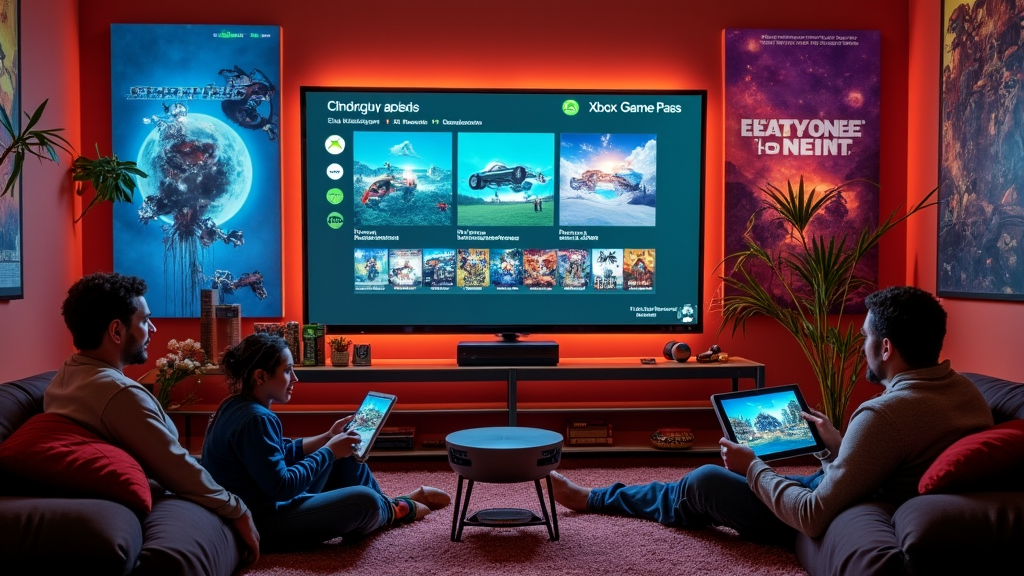
Digital-Only Ownership: Pros, Cons, and Tips
| Advantages | Disadvantages |
|---|---|
| Instant access – Games download immediately after purchase | Storage requirements – All content must compete for limited space |
| Account portability – Games follow your profile across consoles | Internet dependency – Downloads and updates require stable connections |
| No physical damage – Digital files cannot scratch, break, or degrade | No resale value – Cannot recover costs through used game sales |
| Multi-device access – Play on PC, console, and cloud simultaneously | Account restrictions – Games tied permanently to purchasing account |
| Automatic updates – Games stay current without user intervention | Regional limitations – Some games unavailable in certain geographic areas |
| Family sharing – Up to 10 family members access shared libraries | Long-term access – Games depend on publisher and platform continuity |
Optimization strategies for digital ownership:
- Wait for sales — Microsoft typically offers seasonal deals, often 50-75% off
- Use Microsoft Rewards to earn store credit for purchases
- Always enable two-factor authentication for account security
- Compare regional prices for potential discounts in other countries (where permitted)
The digital-only approach aligns with modern software consumption trends while requiring adjusted expectations about ownership permanence and resale possibilities.

Xbox Series S Setup & Performance Optimization (2025 Guide)

Initial Setup Process
Setting up the Xbox Series S requires approximately 15-30 minutes and focuses on network configuration, account creation, and privacy settings optimization for personal or business use. The streamlined process prioritizes user convenience while establishing security foundations.
- Physical Connection: HDMI to display, power, press Xbox button on controller
- Language and Region: Choose region for content and pricing
- Network Configuration: Connect to WiFi or wired internet (25 Mbps recommended minimum)
- Microsoft Account: Sign in or create a new profile (use organization credentials for business)
- Privacy Settings: Set data, safety, and sharing options
- System Updates: Download latest firmware (3-8GB typical first update)
- Game Pass Setup: Subscribe and select installations based on storage need
- For business: Use Azure Active Directory integration for centralized management
- Set ESRB rating limits depending on audience
- Enable guest or shared accounts for multi-user access
- Business networks: Allocate at least 50 Mbps bandwidth for gaming use
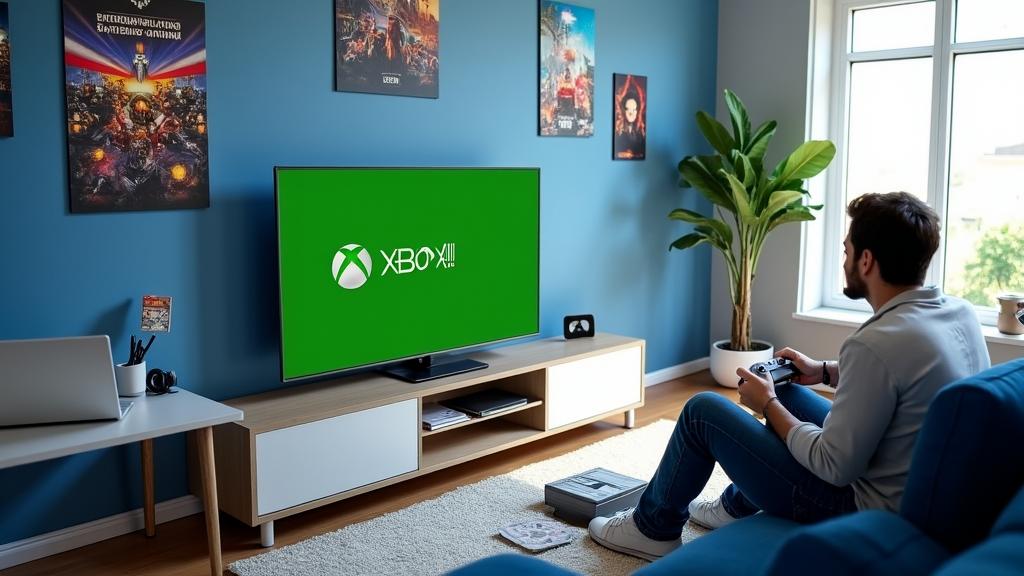
Performance Optimization Tips
Maximizing Series S performance involves strategic settings configuration, network optimization, and regular maintenance routines that ensure consistent gaming experiences.
- Display: Enable 120Hz and Auto HDR if supported
- Storage: Use “Move games to external when not played” for auto-optimization
- Network: Wired ethernet when possible, allow background app/game downloads
- Power: Sleep mode for Quick Resume, background updates
- Audio: Enable Spatial Audio for immersive sound
- Quick Resume: Reserve for most frequently played games, manage space accordingly
- Bandwidth: Download during off-hours, limit simultaneous installs
- Temperature: Keep 6-inch clearance, monthly dust clean for optimal cooling
- Maintenance: Weekly storage cleanup, monthly restart, quarterly network speed test
For business, schedule maintenance in off-hours to keep systems reliable for users.

Backward Compatibility: What Works in 2025
The Xbox Series S supports approximately 97% of Xbox One games, 63% of Xbox 360 titles, and 41% of original Xbox games, creating an extensive backwards compatible library totaling over 2,400 playable titles.
| Console Generation | Compatible Games | Enhancement Features | Notable Exceptions |
|---|---|---|---|
| Xbox One | 99% (~2,100 games) | Auto HDR, FPS Boost, Quick Resume | Kinect games, online-only titles |
| Xbox 360 | 63% (~630 games) | Auto HDR, improved loading/resolution | Music/peripheral licensing issues |
| Original Xbox | 41% (~65 games) | Auto HDR, enhanced perf/resolution | Licensing, technical limits |
- Auto HDR & FPS Boost enhance visuals and fluidity
- Load times significantly improved vs original hardware
- Back-compat titles use less storage, making library management easier
- Ideal for businesses: diverse, bug-free, workplace-friendly entertainment
- Kinect/music games most affected by incompatibility
Backward compatibility gives value to existing digital libraries and smoothes the upgrade path for previous-gen users.
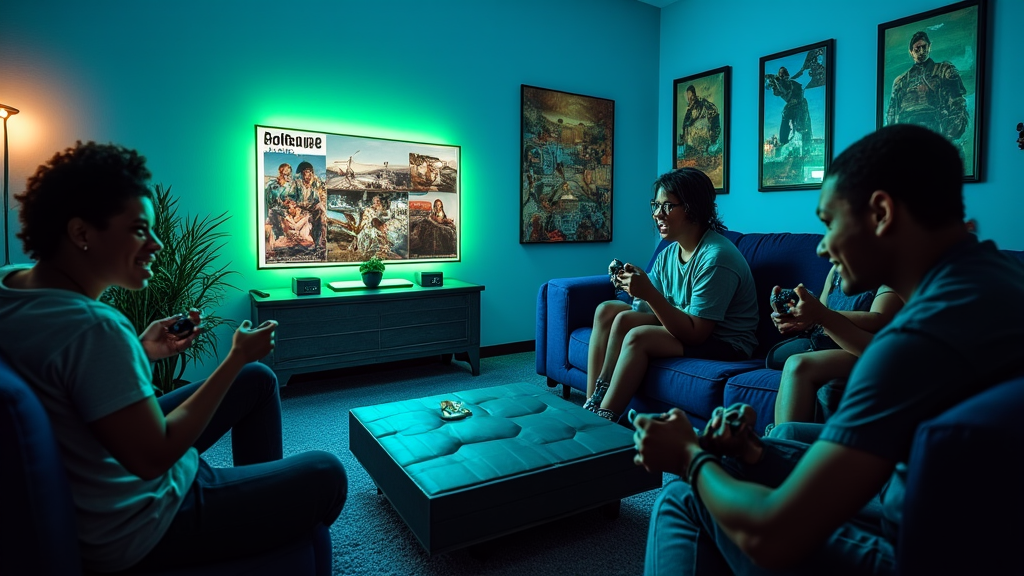
The 2025 Gaming Experience: Exclusives & Online Play

Exclusive & Optimized Titles on Series S
Microsoft’s first-party exclusive catalog showcases the Series S’s capabilities while demonstrating the platform’s strategic focus on diverse gaming experiences optimized for the console’s hardware limitations.
- Starfield: Shattered Space: 1440p/30fps, medium-high settings, 22s loads, Quick Resume
- Forza Motorsport: 1440p/60fps, high car models, reduced environment detail, 15s loads
- Hellblade II: 1080-1440p scaling, 30fps, cinematic fidelity, advanced spatial audio
- Flight Simulator 2024: 1080-1440p, cloud terrain streaming, 30fps
- Age of Empires IV Console: 1440p/60fps, controller-first interface, reduced complexity
Third-party optimization trends mean Dynamic Resolution Scaling and tailored asset usage are the new norm for Series S releases.
Game Pass day-one integration provides instant access to AAA exclusives—an enormous cost saver, particularly for businesses. (See detailed cloud gaming and Game Pass integration here)
Major developer support ensures Series S won’t be an afterthought for years to come, with optimization and rapid adoption in every major AAA launch.
Online Play, Community, and Cross-Platform Support
The Series S delivers comprehensive online gaming capabilities with Xbox Live Gold membership (included in Game Pass subscriptions) providing access to multiplayer gaming, cloud saves, and community features across Microsoft’s gaming ecosystem.
- Cross-Play, Cross-Save, Cross-Purchase: Seamless gaming between Series S, Series X, PC, and mobile for supported titles
- Smart Delivery: Always get the best version for your hardware
- Community: Voice/party chat, LFG, messaging—no feature left behind for Series S owners
- Cloud Gaming: Stream high-storage titles, offload disk space, or play on secondary devices (More on cloud features here)
- Consistent achievements and progress: all synced between devices
For business: manage libraries, schedule gaming events, utilize parental controls—all supported and scalable within Microsoft’s online infrastructure.

Is Xbox Series S Worth It? Value for Different Users

For Casual Gamers, Families, and Business Users
The Xbox Series S delivers exceptional value for casual gamers, families, and business environments prioritizing cost-effectiveness over cutting-edge performance, with total cost of ownership often 40-50% lower than premium gaming alternatives.
- Identical fun and core gameplay in mainstream franchises like FIFA, Minecraft, Rocket League
- Quick Resume—a win for short, casual sessions
- Game Pass Ultimate Family Plan serves 5 different users, great for workplaces and large homes
- Predictable annual cost (first year: $562, subsequent: $204/year for content)
- Break room/office friendly: small, silent, administrative controls, and no physical disc theft
- Documented gains in employee satisfaction and workplace morale
For Enthusiasts, Upgraders, and Secondary Console Buyers
Gaming enthusiasts and users with existing high-end hardware find value in the Series S as a secondary console, bedroom gaming solution, or Game Pass access point rather than primary gaming platform.
- Excellent for Xbox exclusives and Game Pass access at $299—no need for Series X if not a primary system
- Perfect size/noise for bedroom setups, travel, or smaller spaces
- For upgraders from Xbox One: Solid FPS upgrades, but if you want 4K or max detail, Series X or PC is better long-term
- Enthusiast esports/competitive gamers should still favor Series X or PC for input latency/frame rate advantages
- Best value when used to supplement a PC or PlayStation setup
Future-Proofing the Xbox Series S in 2025

Longevity, Support, and Hardware Refresh Rumors
Microsoft’s historical console support patterns suggest the Series S will receive firmware updates and new game compatibility through approximately 2028-2030, providing 6-8 years of total lifecycle support based on previous Xbox generations.
- Consistent monthly updates since launch
- Quick Resume, back-compat, and DirectStorage all improved for 2025
- 1TB hardware refresh rumors—no confirmed release; monitor market in 2025-2026
- Game compatibility likely through at least 2027-28, with gradual diminishment of support as next-gen engines proliferate
- Businesses: estimate 4-5 year service life for reliable support and up-to-date content
- Monitor competing platforms for best upgrade/refresh window
Microsoft has an excellent track record for supporting legacy consoles with updates far beyond their initial generation, reducing technology investment risks for businesses and families alike.

Where To Buy, Pricing, and Accessory Picks in 2025

Best Places to Buy: New & Used Deals, Regions, Bundles
| Retailer | Standard Price | Promotional Price | Bundle Advantages | Availability |
|---|---|---|---|---|
| Microsoft Store | $299.99 | $249.99 (seasonal) | Game Pass trial, extended warranty | Excellent |
| Best Buy | $299.99 | $249.99 + gift card | Geek Squad install, trade-in bonuses | Excellent |
| Amazon | $299.99 | $239.99 (Prime sales) | Prime shipping, easy returns | Excellent |
| Target | $299.99 | $249.99 + RedCard discount | 5% off, in-store pickup | Good |
| Walmart | $299.99 | $229.99 (rollbacks) | Grocery/console bundles | Excellent |
| GameStop | $299.99 | $249.99 + trade credit | Pre-owned + trade bundles | Good |
- Best discounts appear Black Friday, Summer Game Fest, August/September, and major holiday weekends
- If you need Best Buy store locator, hours, or support, or want to maximize your savings, reference the latest Best Buy 2025 deals guide
- Bundles with Game Pass, extra controllers, or budget 4K displays can yield $30-50+ in extras
- Refurbished units offer 20-30% off with Microsoft 90-day warranty—trust certified channels only
- International pricing varies, but big countries see frequent 15-25% discounts
- Businesses: inquire about volume discounts, business warranties, and procurement programs

Recommended Accessories & Expansion Timing
- Essential: Extra Xbox Wireless Controller ($59.99), Rechargeable Battery ($24.99), Xbox Wireless Headset ($99.99), 1TB Expansion Card ($199.99+ as needed)
- Optional: Media Remote ($24.99), Cooling Stand ($39.99), Carrying Case ($29.99)
- Months 1-3: Try base storage, buy accessories for local multiplayer and convenience only
- Months 4-6: Add expansion storage based on experience
- Months 7-12: Buy extras (headset, remote) as habits develop
- Watch Black Friday, Prime Day, and clearance for the best editorially sourced deals
- Accessory compatibility generally crosses Xbox consoles, future-proofing investments
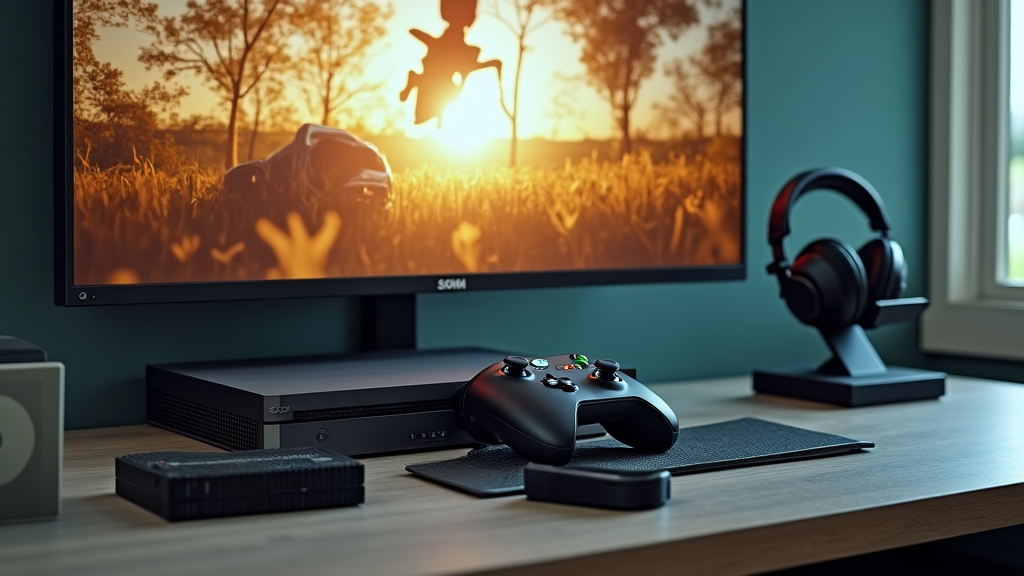
FAQ: Common Xbox Series S Questions for 2025
Is the Xbox Series S truly next-generation gaming hardware?
Yes, the Series S features next-generation architecture including custom AMD RDNA 2 graphics, NVMe SSD storage, and hardware decompression capabilities. The console runs all current-generation games with performance optimizations, though at 1440p vs 4K for Series X.
Can the Series S display 4K gaming visually?
The Series S targets 1440p native resolution with upscaling to 4K displays through intelligent temporal upscaling technology. Visually, 4K TVs work well via upscaled output for most scenarios.
Does the Series S operate quietly during gaming sessions?
Yes, the Series S maintains quiet operation even during demanding games thanks to efficient cooling and lower power use. Rarely exceeds 35-40 decibels—office/bedroom safe.
Can games be played offline without internet connectivity?
Yes, downloaded games play offline, though installs and updates require internet. Game Pass titles may ask for periodic verification; multiplayer requires internet.
Will every Xbox game work on Series S hardware?
No, approximately 97% of Xbox One games, 63% of Xbox 360 games, and 41% of original Xbox games work via backward compatibility. Kinect and select music titles excluded.
What happens to digital games if Game Pass subscription expires?
Purchased games remain forever; Game Pass exclusives require an active subscription. Game saves and achievements persist via cloud.
Are there family sharing options for multiple accounts?
Yes, Xbox Family Settings allow up to 10 family members to share digital content and Game Pass via home console designation. Ideal for business/multi-user setups.
How does Series S performance compare to Nintendo Switch Lite?
Series S greatly outperforms Switch Lite in graphics and processing, but Switch remains fully portable with unique exclusives. The two aren’t direct competitors for most users.
Is the Series S more cost-effective than building a gaming PC?
For casual gaming, yes—Series S beats $800-1000 PCs in performance-per-dollar. PC offers greater flexibility and power for pros but can’t match Series S cost at this tier.
Does an SSD expansion become mandatory for modern AAA gaming?
No, but highly beneficial if you want more than 6-8 AAA titles at once. Game management and external storage can offset needs for moderate users.
Will the Series S support VR gaming in 2025?
No, Microsoft has not announced VR for Series S—focus remains on cloud and traditional display experiences. Hardware and ecosystem limitations apply.
Are there Series S-specific game optimizations developers should implement?
Yes, including dynamic resolution, compressed textures, asset streaming, and special performance settings. Series S hardware is always a priority in AAA launches now.
What represents the average download size for 2025 AAA gaming titles?
Most AAA downloads are 75-120GB; the largest (Call of Duty, etc.) 150GB+.
Which accessories qualify as “must buy” versus “nice to have” for families and SMEs?
Must buy: Extra controller, rechargeable pack.
Nice to have: Storage expansion, wireless headset, remote. Prioritize based on use patterns and group size.

